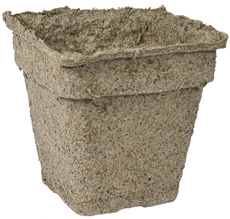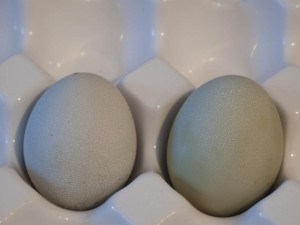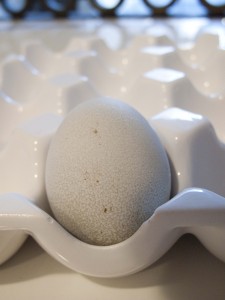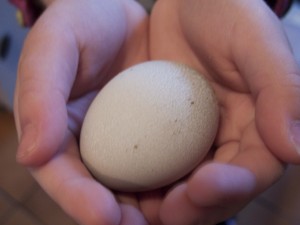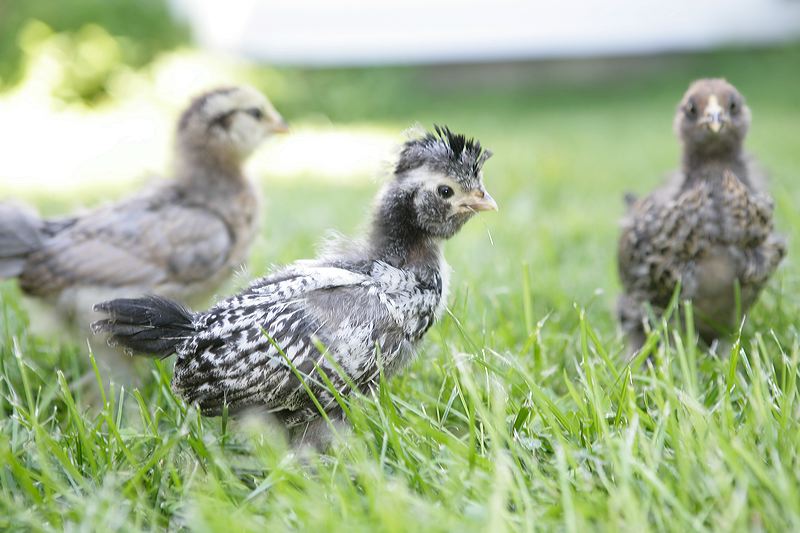
by Ben Block on October 6, 2008
They arrived when a member of BackyardChickens, an online forum, ordered the birds in the mail this past May. “I actually get my chicks in today hopefully, and I am worried that animal control will be at the post office waiting for me with hand-cuffs,” the new poultry farmer wrote.
An underground “urban chicken” movement has swept across the United States in recent years. Cities such as Boston, Massachusetts, and Madison, Wisconsin, are known to have had chickens residing illegally
behind city fences.
But grassroots campaigns, often inspired by the expanding movement to buy locally produced food, are leading municipalities to allow limited numbers of hens within city limits.
Cities such as Anne Arbor, Michigan; Ft. Collins, Colorado; and South Portland, Maine have all voted in the past year to allow residents to raise backyard poultry. "It’s a serious issue – it’s no yolk,” said Mayor Dave Cieslewicz of Madison, Wisconsin, when his city reversed its poultry ban in 2004. “Chickens are really bringing us together as a community. For too long they’ve been cooped up.”
Raising backyard chickens is an extension of an urban farming movement that has gained popularity nationwide. Home-raised livestock or agriculture avoids the energy usage and carbon emissions typically associated with transporting food.
“Fresh is not what you buy at the grocery store. Fresh is when you go into your backyard, put it in your bag, and eat it,” said Carol-Ann Sayle, co-owner of five-acre (two-hectare) farm in Austin, Texas, located within walking distance from the state capitol. “Everyone should have their own henhouse in their own backyard.”
“Buying local” also provides an alternative to factory farms that pollute local ecosystems with significant amounts of animal waste – which can at times exceed the waste from a small U.S. city, a government report revealed last month. In the United States alone, industrial livestock production generates 500 million tons of manure every year. The waste also emits potent greenhouse gases, especially methane, which has 23 times the global warming potential of carbon dioxide.
Meanwhile, advocates insist that birds raised on a small scale are less likely to carry diseases than factory-farmed poultry, although some public health officials are concerned that backyard chickens could elevate avian flu risks.
Chicken: The ‘Buy Local’ Mascot
After the trend first gained popularity in London, England, with the invention of the “eglu” chicken house about ten years ago, large numbers of city dwellers began to raise chickens in the U.S. cities of Seattle and Portland, said Jac Smit, president of the Urban Agriculture Network. “It’s no longer something kinky or interesting,” Smit said. “The ‘chicken underground’ has really spread so widely and has so much support.”
Within the past five years, the trend has expanded to cities where raising hens was already legal, including Los Angeles, San Francisco, and Chicago.
“Chicken has become the symbol, a mascot even, of the local food movement,” said Owen Taylor of New York City, who knows of at least 30 community gardens that raise poultry, mostly for their eggs. One Brooklyn home has raised upward of 50 hens. “We’re the biggest city in the country, so to have it here I think blows people’s minds.”
K.T. LaBadie, a University of New Mexico graduate student, was born into a family that grew its own fruits and vegetables. So when she moved to Albuquerque and met a friend who was raising his own chickens, poultry was a logical progression in her own home. She began with two hens, and now she has four.
“It felt like a good compliment to our backyard gardening. We get compost from the chickens that goes back into the vegetable beds,” LaBadie said. “And there’s really nothing better than harvesting tomatoes and peppers from your garden and being able to make an omelet with it using a meal that was based in your backyard.”
The spread of backyard chickens has promoted spin-off businesses that cater to the local market. Some communities are relying on mobile slaughterhouses to manage and distribute the poultry meat, according to Smit. “It’s no longer huge slaughterhouses doing millions [of birds]. It’s a guy driving around on a truck, visiting neighborhood to neighborhood,” he said. “And it’s not chickens only…. Ducks, turkey, and quail are particularly attractive.”
In Portland, Oregon, residents have organized a farming cooperative to raise hens for egg production. “The money is used to maintain the cooperative. It’s not necessarily organized to be a profit-sharing venture,” said Debra Lippoldt, executive director of Growing Gardens, a Portland urban agriculture advocacy group.
Public Health Concerns
If avian influenza eventually evolves to infect humans, experts fear that backyard chickens will be vectors of the disease. Government officials have threatened to ban free-range chickens in cities in Thailand, Indonesia, and Hong Kong, where bird flu has spread in the past. Governments around the world are also concerned that wild fowl will infect backyard chickens, leading to calls for similar bans in the Canadian province of British Columbia and in Australia.
But several public health officials argue that homegrown poultry are not a disease threat if the chickens are properly maintained. “Make sure the roof of the pen has a solid cover to protect birds from fecal matter that may drop from birds flying overhead,” said University of California at Davis poultry specialist Francine Bradley in a statement released in 2005, at the peak of avian flu concerns. “We always tell people, don’t let anyone near your birds who doesn’t need to be there [due to fears of people carrying the virus].”
Sustainable farming advocates insist that backyard chickens are less of a concern than factory-farmed poultry, which the Pew Commission on Industrial Farm Animal Production has said poses serious risks of transmitting animal-borne diseases tohuman populations, especially due to the prevalence of antimicrobialresistance.
“When it comes to bird flu, diverse small-scale poultry farming is the solution, not the problem,” the international sustainable agriculture organization GRAIN concluded in a 2006 report.
For urban poultry farmers, a more relevant health issue is whether the chickens, which many owners consider to be pets, can survive urban wildlife, even in New York City. “It’s awful how often flocks are decimated by raccoons or hawks or possums,” said Owen Taylor, who runs the City Farms livestock program, an extension of the sustainable food organization Just Food.
As the backyard chicken movement spreads, urban farmers are finding new ways of experiencing city living, whether their chickens are pets or dinner. “Raising chickens on a backyard stoop, especially if you have children, is agreeable,” Smit said. “How you convince the kids you’ll cut its neck and eat it is another thing.”
Ben Block is a staff writer with the Worldwatch Institute. He can be reached at bblock@worldwatch.org.
